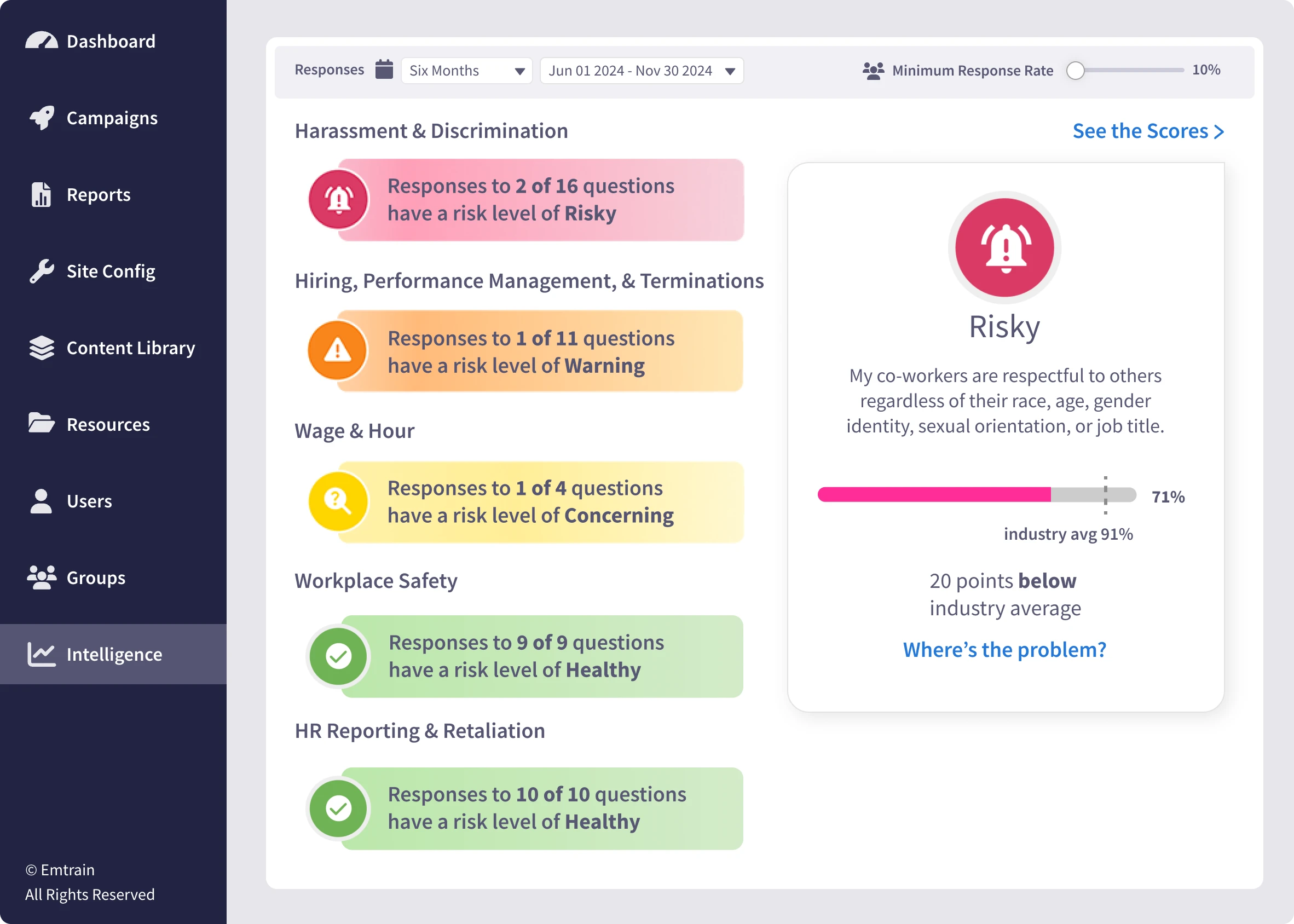Home » Concepts » Diversity, Equity, & Inclusion » Cross-cultural communication
Cross-cultural communication refers to the exchange of information between individuals from different cultural backgrounds, focusing on understanding and overcoming cultural differences.
Emtrain’s harassment training course is engaging, interactive, and designed to spot and reduce EEO risk.

The significance of cross-cultural communication has grown alongside globalization. Historically, as businesses expanded internationally, the need to navigate diverse cultural norms became evident. In the late 20th century, multinational corporations recognized that cultural misunderstandings could lead to conflicts and inefficiencies. This realization prompted the development of training programs aimed at enhancing cultural awareness and communication skills among employees.
In contemporary workplaces, cultural diversity is prevalent not only in multinational corporations but also in domestic organizations. Employees bring varied cultural frameworks that influence their communication styles, decision-making processes, and workplace expectations. Despite advancements in understanding, challenges such as unconscious bias, misinterpretations, and language barriers persist, highlighting the ongoing need for effective cross-cultural communication strategies.
Effective cross-cultural communication is crucial for fostering collaboration and innovation in diverse workplaces. A 2020 report by the World Economic Forum emphasized that critical thinking, problem-solving, and self-management skills—such as active learning, resilience, stress tolerance, and flexibility—are among the top skills needed for the future of work. These competencies are essential as automation and AI transform industries, making uniquely human skills like communication, empathy, and cultural understanding increasingly valuable. (Source: World Economic Forum)
Moreover, a 2023 article highlighted that 81% of employers consider cross-cultural competence to be increasingly important over the next five years, followed by multilingualism (77%) and active listening (75%) (Source: EFMD Global).
Despite its importance, several barriers can hinder effective cross-cultural communication:
Addressing these barriers requires awareness and proactive strategies to foster effective cross-cultural interactions.
Cross-cultural communication challenges can manifest in various workplace situations:
These scenarios demonstrate how cultural differences influence communication. With proper training, teams can bridge these gaps and work more effectively.
Understanding and addressing cross-cultural communication challenges begins with recognizing and respecting differences. Proactive efforts can reduce misunderstandings and foster inclusion.
By cultivating empathy and building awareness, organizations create inclusive environments where cultural differences are assets rather than obstacles.
Preparing for cross-cultural communication challenges involves proactive measures, including:
Microlesson: Interpreting Emotion in Cross-Cultural Communication
In this microlesson, employees and managers learn to navigate and adjust different styles of emotional expression. It explains how cultural differences influence communication and teaches how to avoid making assumptions based on emotional expression.
Microlesson: Cultural Cues for Quality Conversations
This microlesson teaches how communication styles differ across cultures and provides best practices to facilitate input and ensure respect.
Microlesson: Saving Face: Framing Cross-Cultural Communications
Learn how to frame conversations to align with cultural needs and maintain professional relationships across diverse teams.
Blog: 6 Ways to Foster Belonging in the Workplace
This blog explores actionable steps for leaders to create an inclusive environment where all employees feel valued and
Tipsheet: Framing Conversations in Cross-Cultural Communication
Employees and managers can use this tipsheet to be effective cross-cultural communicators, think through their intentions, and appropriately frame communications.
Video Preview: Navigating Cultural Deadlines
Jane is pushing Zhang Wei, a lead engineer from China, to commit to a project deadline. Zhang Wei feels rushed, risking mistakes and team embarrassment. This video illustrates how cultural differences in urgency and communication can create misunderstandings and how to address them.